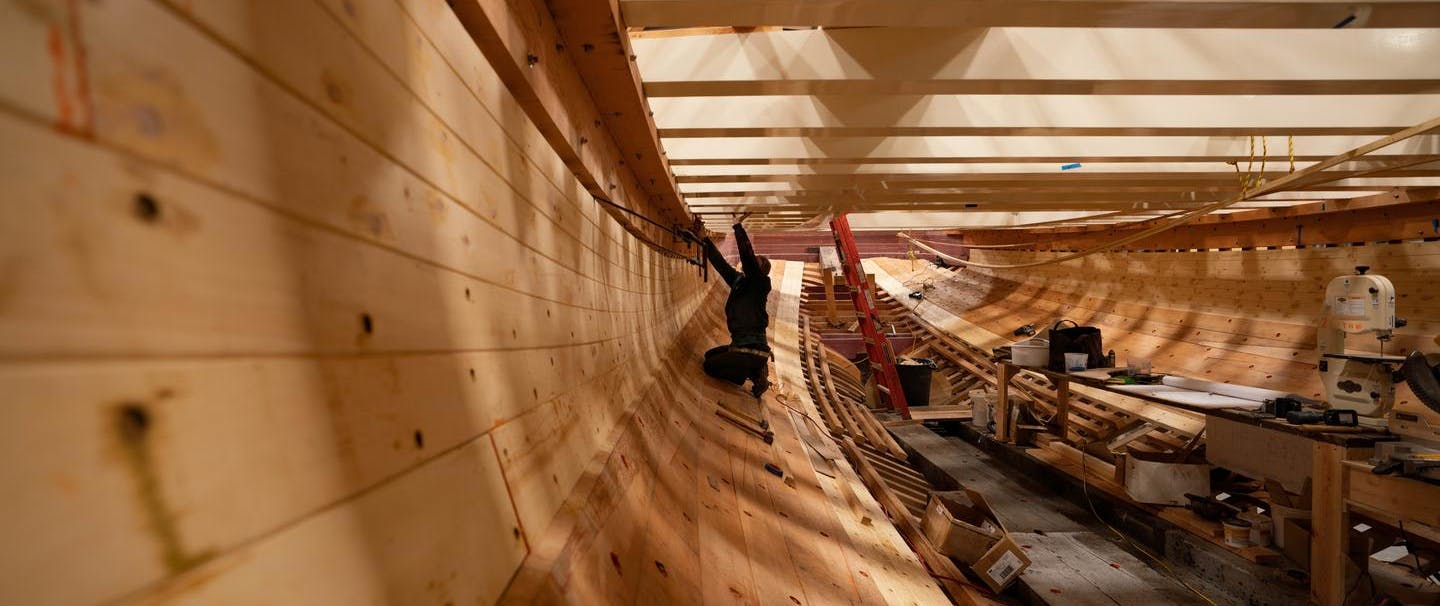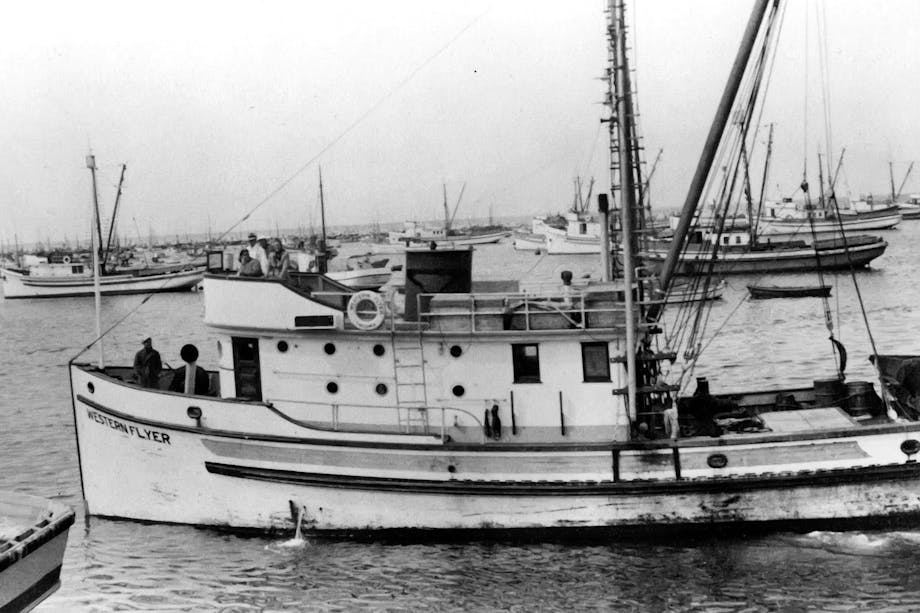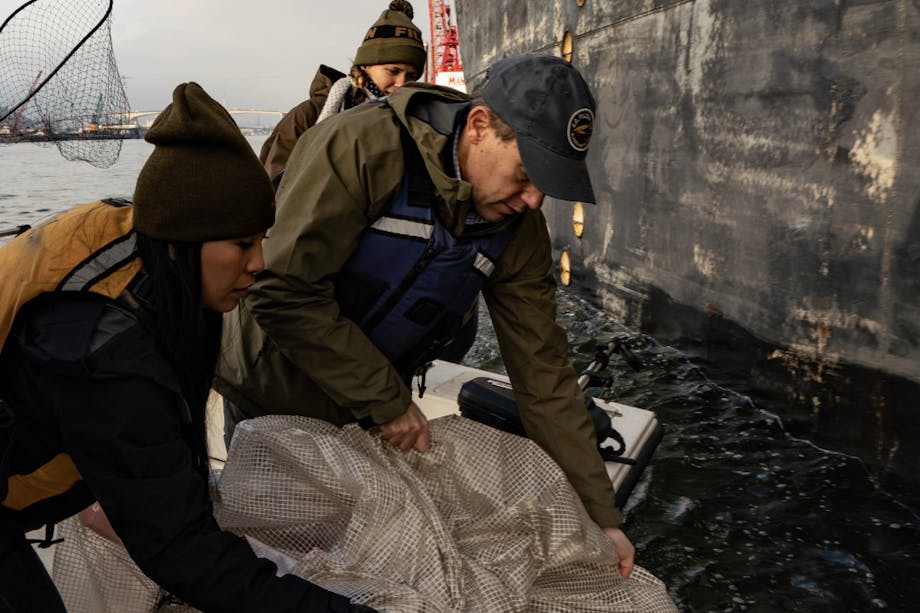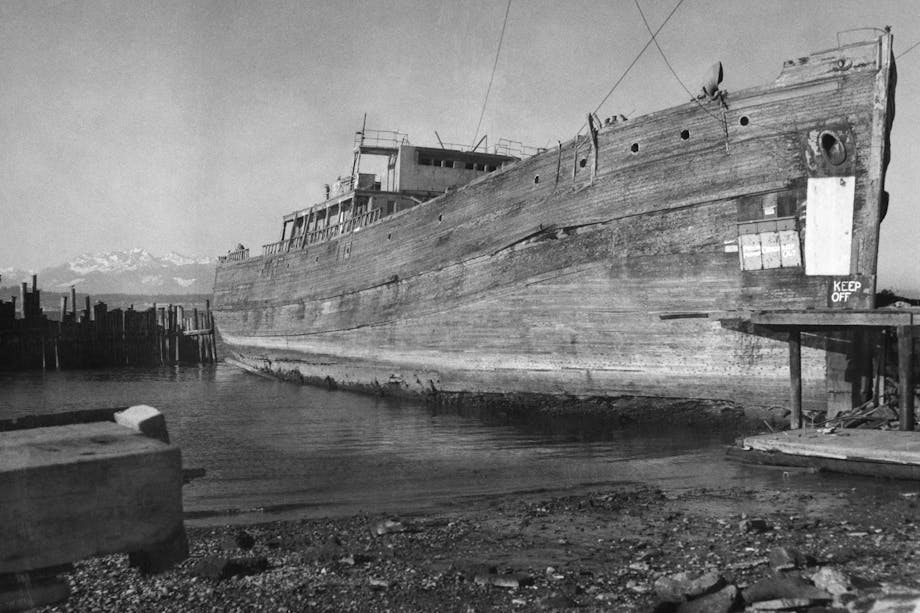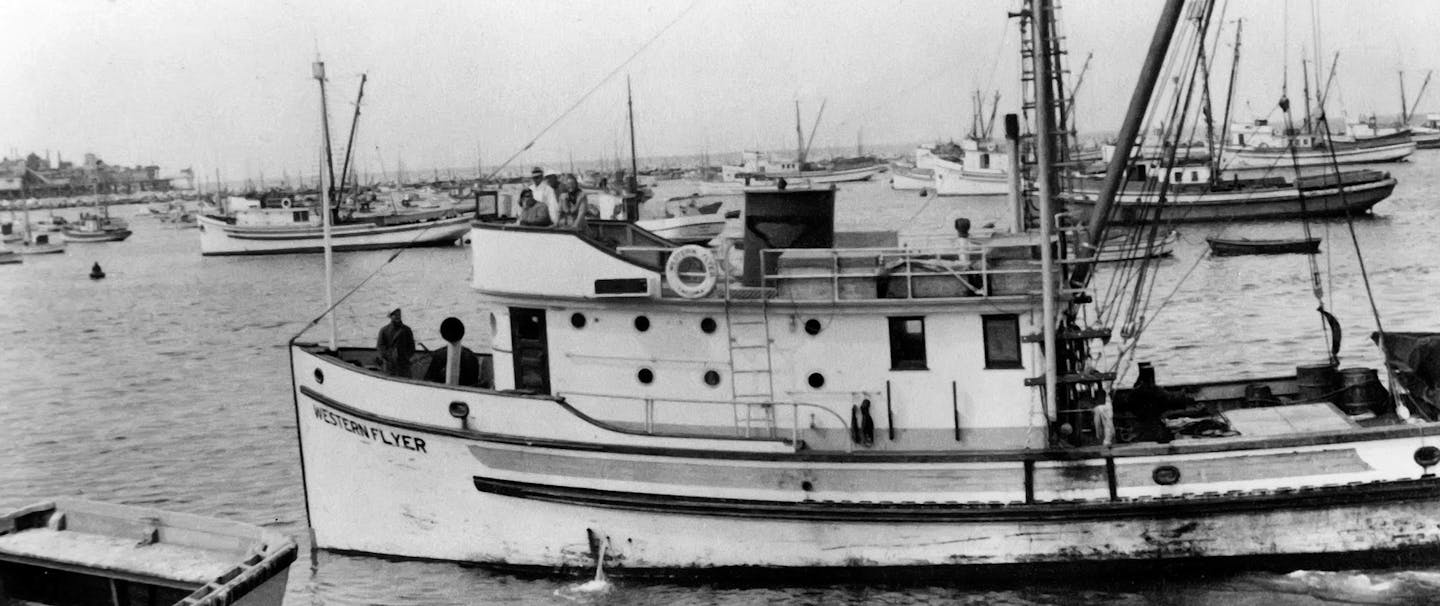Southeast of Port Townsend is a gravel yard where large boats balance on blocks of wood and slender steel stands. Removed from the water, the vessels reveal pleasing, functional curves. Inside massive sheds, deliberate Lilliputians in warm and dusty clothing crawl in and out of the leviathans to a symphony of hand and power tools.
In a conference room above the shop is a long table where the members of the Port Townsend Shipwrights Co-op speak about this place.
“It was founded in 1981. They wanted to be in charge of their destiny,” says Chris Chase. He is the current project director of the Western Flyer restoration, former owner at the co-op, and a graduate of the Northwest School of Wooden Boatbuilding.
As it stands now, “the structure of the co-op is up to 12 equal owners and between 30 and 35 employees.”
Tim Lee, a current owner, a graduate of the boatbuilding school who taught there for 13 years, elaborates on the structure.
“Twelve is a sweet spot. It’s big enough that each part of the trade is represented. There’s a huge body of knowledge here. It’s humbling. Our clientele likes it because there’s always an owner connected to each job.”
Chris continues: “It’s really evolved in the last 20 years to be a state-of-the-art electronic company doing high-end cutting-edge systems coupled with traditional woodworking. Its roots were in the commercial fishing industry. In the early ʼ80s, about 50 percent of the Alaskan fishing fleet was still wooden.”
Lee spins a tale of the region’s heritage from the nineteenth century.

Puget Sound is one of the major boatbuilding centers in the country. “There was always a demand for boats—big timber here. Down Sound, there was a lot of Croatian and Slavic—and a lot of English boat builders up the coast. There were a lot of Japanese, and the Scandinavians were in Ballard. The fishing and pleasure boat industry was growing. During both wars, they were building barges and all sorts of ships. This era was the most modern manifestation of traditional building.”
By the late ʼ60s , a generation of shipwrights was aging out, and wooden boats competed with steel, aluminum, and fiberglass. Port Townsend began to attract a new generation of craftsmen, hippies, and a master shipwright from Seattle. Within a decade, the mix created a resurgence of interest in wooden boats with a festival, a boat school, and several boat-works, including the Port Townsend Shipwrights Co-Op.
“There were five guys in 1971. Today, there are 350 that make a living in Port Townsend. It’s an unbelievable economic engine for the community,” says Chris.
The co-op works on boats of all materials, and wood might appear anachronistic in a modern yard. However, the wooden-hulled Alaskan fishing boats returning year after year disprove that.
“I think traditional boats are well thought out,” says Lee. “Unfortunately, wood has this reputation of being hard to maintain, but we’re talking about boats that are 60, 70, 80 years old. Comparing wooden boat to fiberglass, aluminum, and steel, it’s not really fair until those boats are the same age.”
“Unlike steel, where you might a need plasma torch to cut it, with wood you can use a hand saw. Anyone can approach wood and cut wood. It just takes know-how."
As Lee and Chase start to enter their fourth decade in the trade, what does the future have in store? Around the shop are young faces that have come to work. Ginny Wilson and Lachlan Carlson are recent graduates of the boat school.
After a diverse career teaching, commercial fishing, and leading bike tours, Wilson felt “it was time to spend the rest of my life getting good at something. It echoes my life of doing things out of the ordinary. I like pain—things that challenge me. It can be really rewarding.”
Carlson went from his high school shop in Seattle to the wooden boat school and into the co-op.
“The amount of knowledge from all these people who want to pass it on is amazing. This place is special.”
Wood draws people to touch and form with it. Carlson calls it “accessible.”
“Unlike steel, where you might a need plasma torch to cut it, with wood you can use a hand saw. Anyone can approach wood and cut wood. It just takes know-how.”

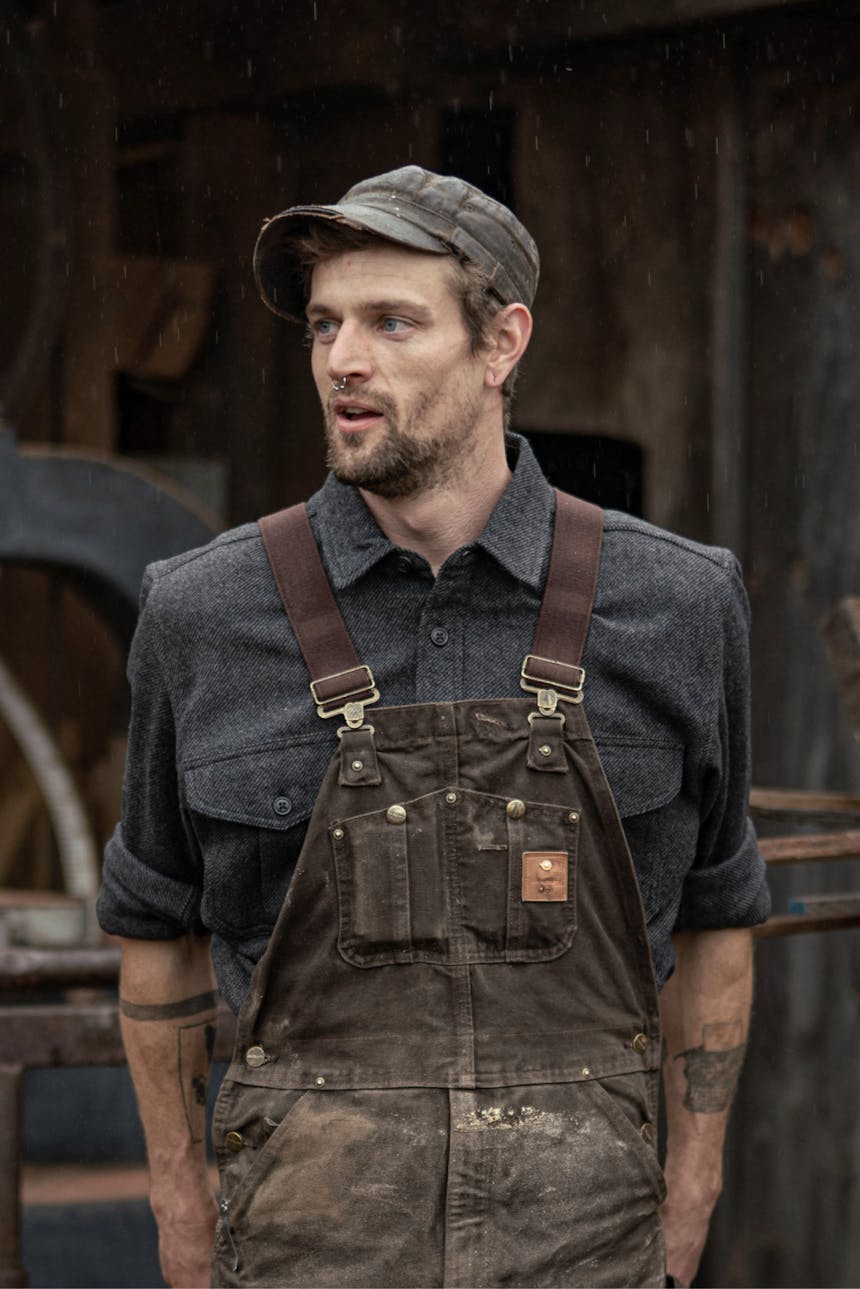

It’s fitting that the cooperative’s logo is a giant bandsaw. In 1981, the first members of the co-op pooled their money and purchased the seven-foot steel machine in a fire sale from the Western Boat Building Company in Tacoma, Washington. They raised a timber frame building around it, and this became the nucleus of their first shop that, today, still hums below the conference room.
Unknown at the time was that the Western Boat Building Company had used the same saw 44 years earlier to build a utilitarian sardine seiner named the Western Flyer. Destined to become briefly famous, forgotten, and sunk three times, her odyssey finally brought her to a different shop 80 years later and 80 miles from where they first laid her keel. Lee smiles as he recounts the story.
“It’s the saw that built the boat twice. Maybe that’s why the Flyer’s here.”
